SSH Key-Based Authentication for Anschutz Medical Campus¶
Anschutz Medical Campus users can access the Alpine Supercomputer using ssh keys. Please contact hpcsupport@cuanschutz.edu to initiate this process.
Prerequisites:¶
- If you do not already have an XSEDE/ACCESS account, follow the instructions here for new user registration. Please direct any questions about new accounts to the ACCESS ticketing system (https://access-ci.atlassian.net/servicedesk/customer/portal/2/create/30).
- Sign and fill out CU Anschutz’s Alpine form: https://ucdenverdata.formstack.com/forms/alpine_eua_and_intake
- You will receive an email from hpcsupport@cuanschutz.edu in approximately 1-2 weeks confirming your CURC account has been created.
- You must be connected to a CU Anschutz network or the CU Anshutz VPN.
NOTE: A download link for GlobalProtect VPN and setup instructions for CU Anschutz affiliates are available from https://www.ucdenver.edu/regression-testing/bootstrap-4-testing/tools-services/remote-access-vpn. Once the VPN is configured, a web login will require you to enter your CU Anschutz username and password and accept the Duo prompt.
Step 1: Enroll in the RMACC CILogon Registry¶
You will receive an email from registry@cilogon.org inviting you to enroll in the RMACC Registry.
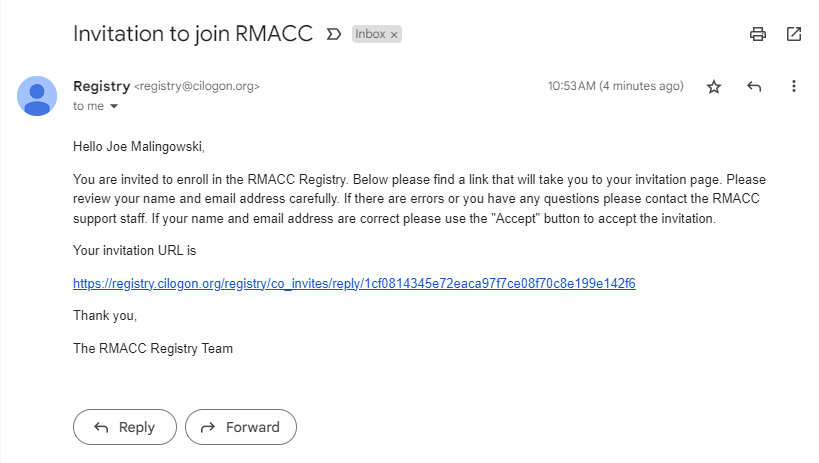
Follow the invitation URL and click ‘Accept’. The invitation link becomes invalid once you click ‘Accept’, so complete all of Step 1 before closing your browser tab.

You will be automatically routed to the login page. Select ‘ACCESS CI (XSEDE)’ from the Identity Provider dropdown menu and click ‘Log On’.
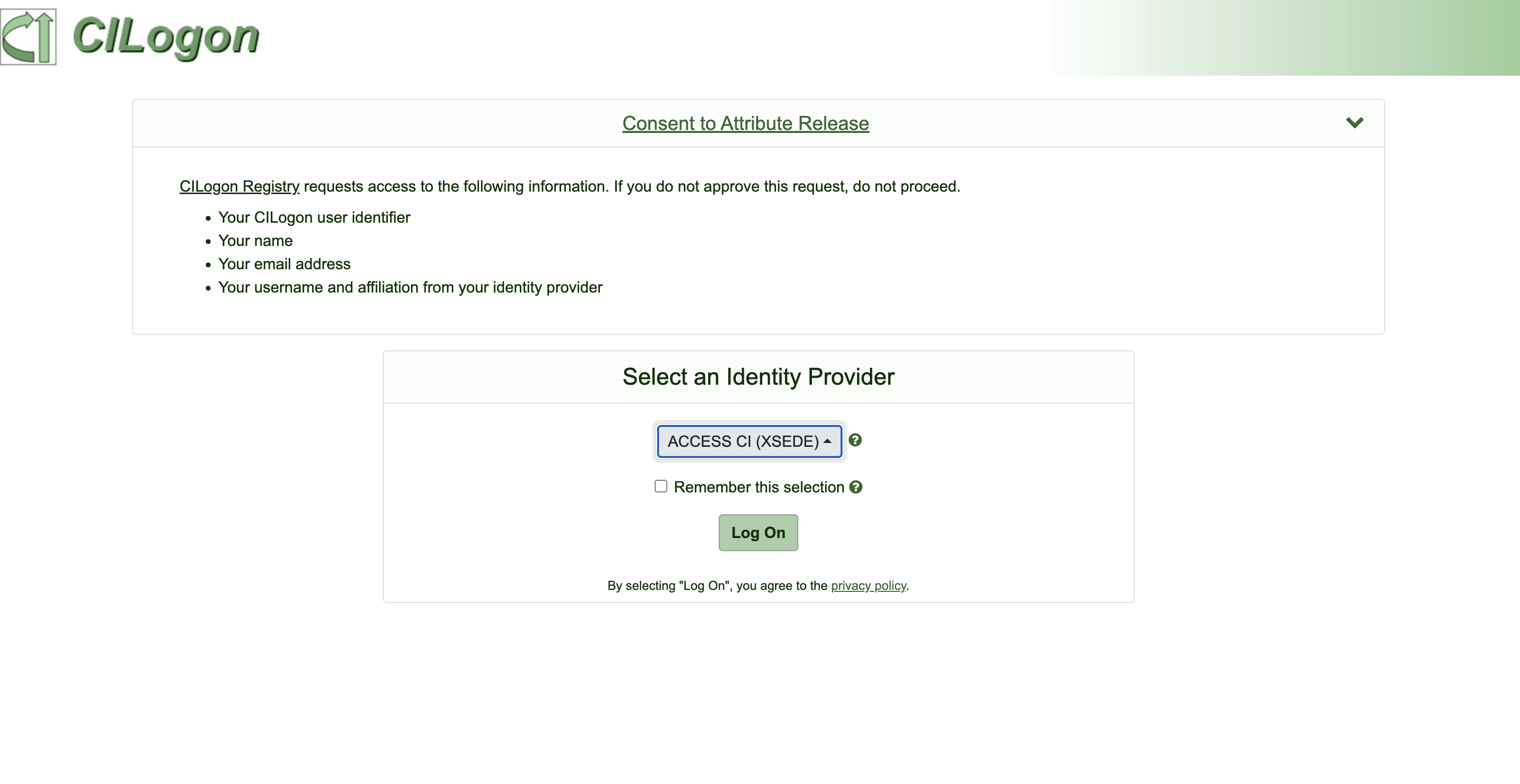
Enter your ACCESS/XSEDE username and password and click ‘Login’.
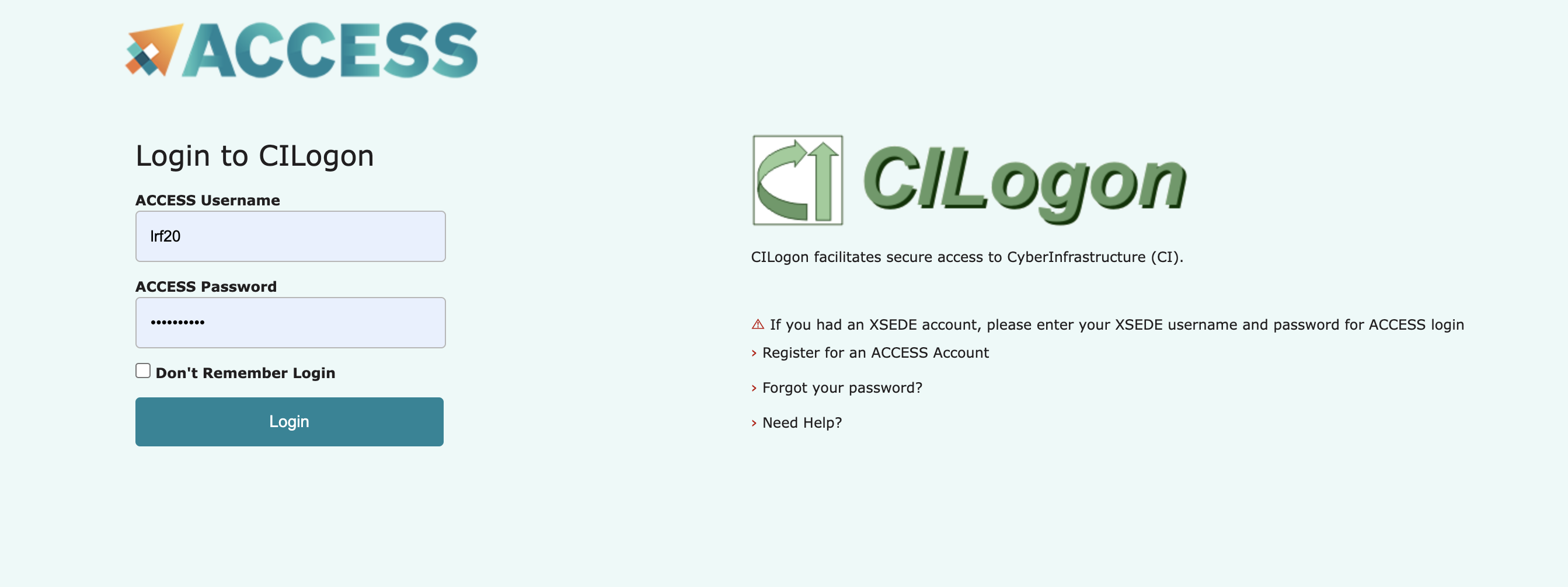
Accept the Duo push from your device.
IMPORTANT: You can move on to Step 2, but please make sure 10 minutes have elapsed between completing Step 1 and beginning Step 3.
Step 2: Generate an ssh key¶
You are strongly encouraged to set a passphrase for your key pair. You will be prompted to enter the passphrase each time you log in.
SSH Key Generation for Windows Users:
- Using command prompt, PowerShell, or Windows Terminal: https://www.howtogeek.com/762863/how-to-generate-ssh-keys-in-windows-10-and-windows-11/
- Using PuTTY: https://devops.ionos.com/tutorials/use-ssh-keys-with-putty-on-windows/
SSH Key Generation for Mac Users: https://docs.tritondatacenter.com/public-cloud/getting-started/ssh-keys/generating-an-ssh-key-manually/manually-generating-your-ssh-key-in-mac-os-x
Step 3: Upload your ssh key to registry.cilogon.org¶
After logging into registry.cilogon.org with your ACCESS credentials, click on the dropdown menu in the upper right hand corner by your name. Select ‘MY PROFILE (RMACC)’.
Select ‘Authenticators’ from the menu on the right.
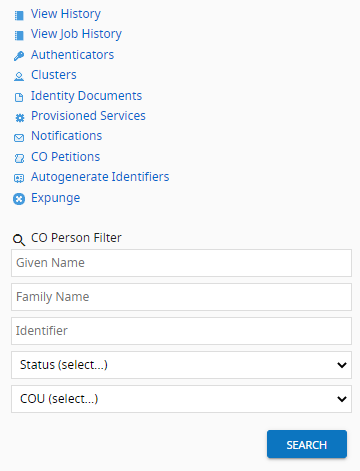
Click ‘Manage’ in the SSHKeyAuthenticator row.

Select ‘Add SSH Key’.

Click ‘Choose File’. If you store your SSH keys in a hidden directory (e.g. ~/.ssh), it may be difficult to locate your public key using a Finder/File Explorer window. As a workaround, you can copy your public key to an easily discoverable location using the Terminal App/Windows Command Prompt: cp ~/.ssh/id_rsa.pub ~/Desktop
Locate your public key (<keyname>.pub) on your local drive, then click ‘UPLOAD’.

A green message box will notify you that your SSH key was successfully added to your account.

After a few minutes you can proceed to Step 4.
Step 4: Sign in from a terminal or terminal emulator¶
NOTE: You must be on the University of Colorado Anschutz Medical Campus VPN or network. See Prerequisites above.
SSH into the CURC CI login node by entering the following in your terminal or terminal emulator:
ssh -i <privatekey_file> <username>@xsede.org@login-ci.rc.colorado.edu
The -i flag is used to point to the location of your private key on your local system. The private key must correspond to the public key you uploaded to your RMACC CILogon profile.
For example, if I uploaded id_rsa.pub to my profile, I would login as such:
ssh -i ~/.ssh/id_rsa lrf20@xsede.org@login-ci.rc.colorado.edu
You will be prompted to enter your passphrase if you set one during key generation.
c) Once you are logged in, you will see the CURC Message of the Day and your prompt will change to <username>@login-ci[1-2]. The Message of the Day contains important information and reminders about CURC systems, so please take time to read this on regular basis.

Deleting or Replacing SSH Keys in RMACC CILogon Registry¶
Log in at registry.cilogon.org and navigate to the ‘Authenticators’ section of your profile (see Step 3, above). Click ‘Delete’, then repeat the process for adding a new key. It will take a few minutes before you can log in with your new key.
Troubleshooting¶
- If you are able to get through Step 3 but unable to ssh in from your terminal, check that the ssh key in your command is the same key you uploaded to the registry.
- If you are prompted for a passphrase (not a password) when signing in from your terminal, this refers to the passphrase you set when you generated your ssh key. If you don’t remember it then you will have to generate and upload a new ssh key to the registry. If you are prompted for a password, please contact rc-help@colorado.edu, as this indicates an issue with your CILogon enrollment. Please include a screenshot of the error message and the date/time of your last login attempt.
- If you receive an error message indicating that you are not in the COmanage registry (see screenshot below), please email rc-help@colorado.edu. Please include a screenshot of the error message and the date/time of your last login attempt.
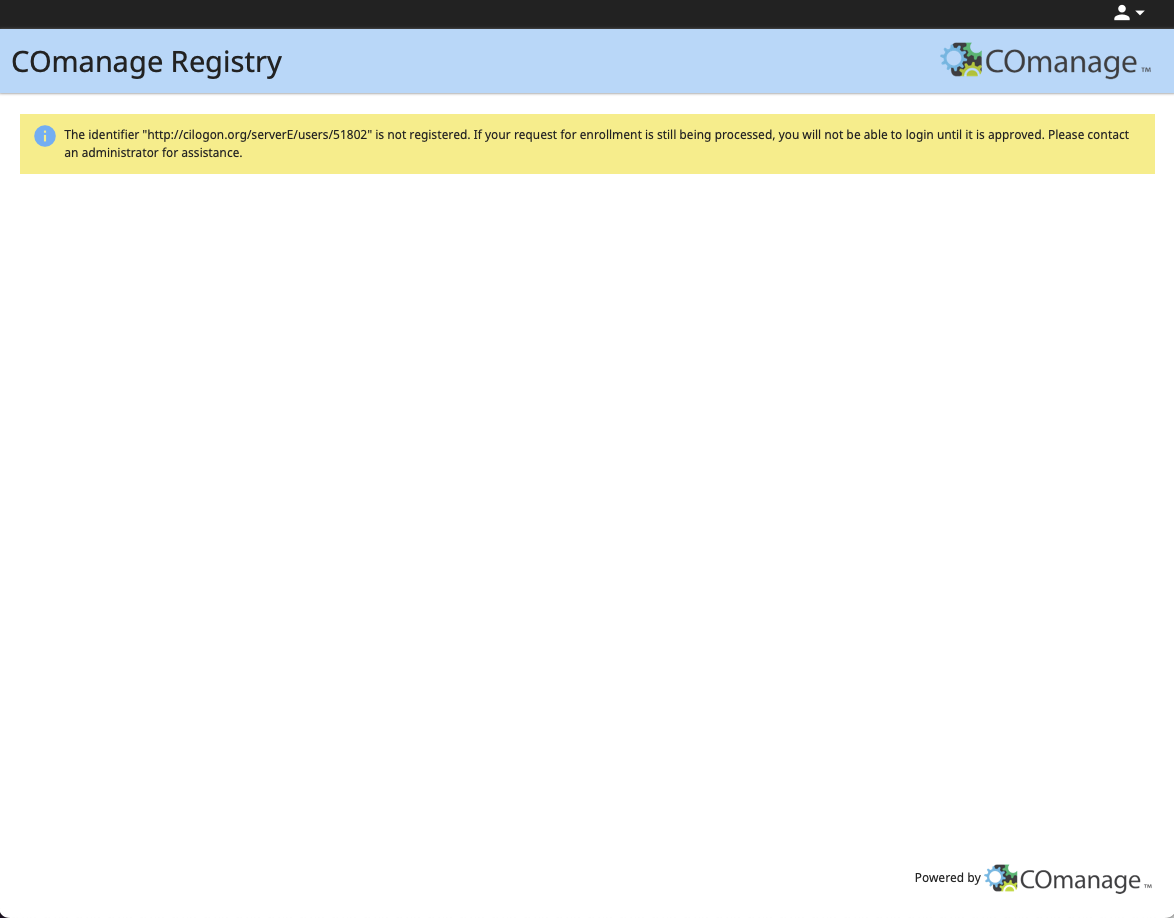
Alpine is jointly funded by the University of Colorado Boulder, the University of Colorado Anschutz, Colorado State University, and the National Science Foundation (award 2201538).